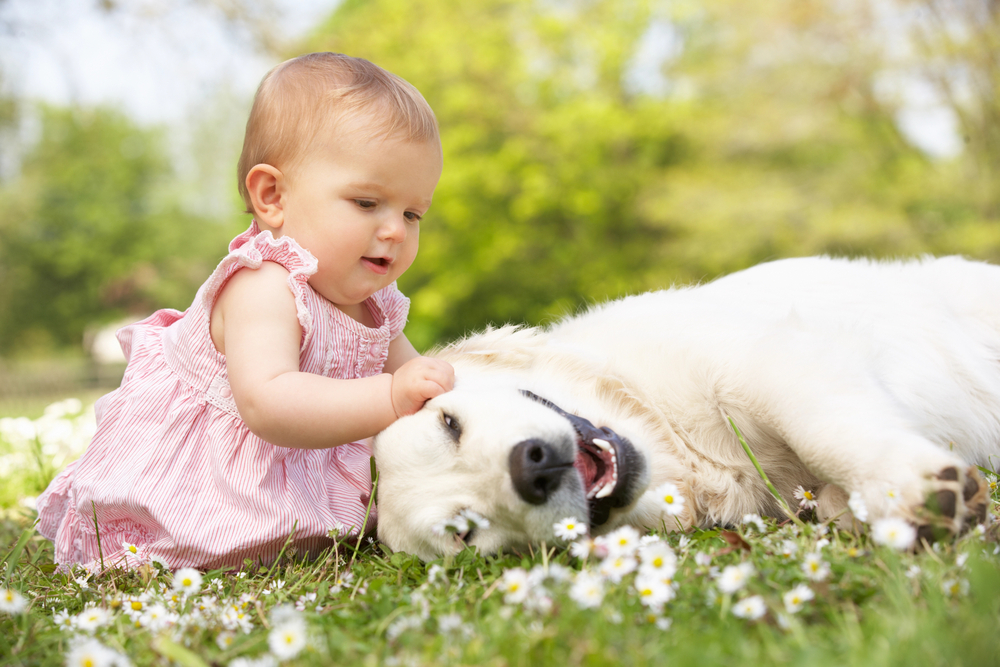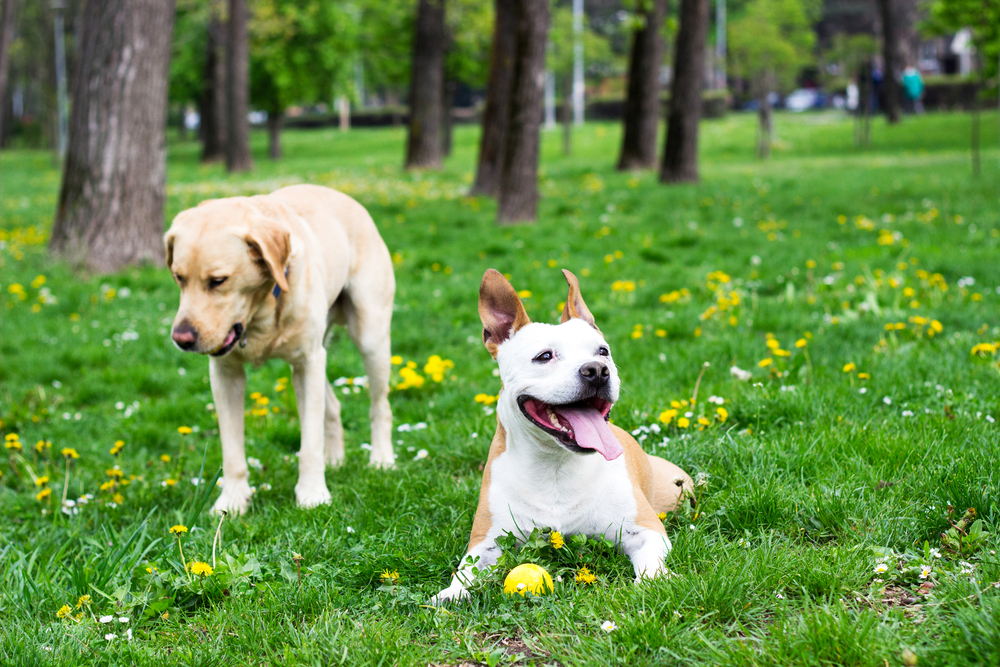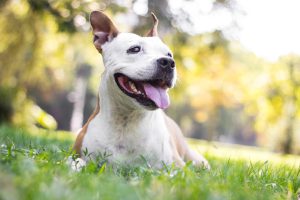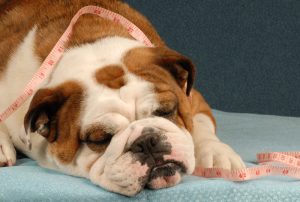
Summer is around the corner, and you’re considering getting a dog. The thought of going on hikes, swimming, kayaking or lounging in the grass with a furry companion after an exciting game of fetch becomes enticing as the weather heats up.
Summer dogs make ideal companions for lazy, hot days or adventurous weekend getaways. However, some dogs fare better in the heat than others. This article explores the best dog breeds for hot weather. It also highlights safety tips to protect your pup from the heat and other summer dilemmas.
Whatever plans you have in store for the upcoming season, Halo Collar can help keep your pup safe. Using wireless GPS technology, the Halo Collar allows you to create invisible fences and customizable feedback to prevent your pup from wandering or getting lost.
Characteristics of Dogs Suited for Warm Weather
Warm-weather dogs often display certain physical and behavioral traits.
Physical Traits
Look for the following physical characteristics:
- Short, light-colored coats: Dogs with short hair, no hair or single coats do better in hot climates. Additionally, light colors, including tan, white or gray, keep the heat away.
- Lean body mass: A lean body structure reduces your pup’s risk of overheating, preventing health complications such as heatstroke.
- Long legs: Being higher off the ground allows for better air circulation. This can help your furry friend stay cool in the sun.
- Large ears: Blood vessels in the ears expand during extreme heat and serve as a coolant, helping reduce body temperature.
Behavioral Traits
Dogs with these behavioral traits also thrive in warm temperatures:
- Lower energy levels: Low-energy dogs with laid-back or reserved temperaments don’t typically require strenuous exercise, alleviating concerns of becoming overheated or dehydrated.
- Preference for shade: Dogs that prefer lounging in the shade or air conditioning typically spend less time in the sun, reducing health risks.
- Efficient panting: Because dogs can’t sweat, panting helps them cool down and remove water from their nose and lungs. However, excessive panting may indicate heatstroke or allergies.
Top Dog Breeds Born for Summer
Check out which dog breeds have the physical and behavioral traits to make ideal summer companions.
Australian Cattle Dog
The Australian cattle dog is native to Australia, a continent known for hot weather. Sporting a short, multicolored double coat, this breed stays relatively cool during the day and utilizes its natural insulation to keep warm at night. Large ears and a lean, compact body also act as hot weather protectors and help prevent overheating.
Additionally, Australian cattle dogs are highly intelligent and natural herders. They get exercise from herding livestock but don’t tend to overexert themselves, helping them stay safe as temperatures rise.
Chihuahua
Originating in the hot deserts of Mexico, Chihuahuas aren’t strangers to warmer climates. In fact, you may need to provide your tiny four-legged friend with a sweater once the sun sets. Chihuahuas have thin coats in various colors, including white, cream, brown and beige.
Despite their compact size, the Chihuahua’s long legs and erect ears make it stand taller than other small dogs. They aren’t very active and enjoy cuddling in a cool room on hot days.
Ibizan Hound
The Ibizan hound’s history spans back centuries to the Balearic Islands near Spain’s eastern coastline. However, Egyptian portraits suggest it may originally be a descendant of Egyptian hounds. Either way, the Ibizan hound knows how to navigate excessive heat.
A graceful, athletic dog, the Ibizan hound was bred to hunt rabbits and has long, spindly legs ideal for circulating air while running. This medium-sized dog also bears large, pointy ears and a short coat in shades of white and red. These physical traits help it stay safe during summer.
Italian Greyhound
It’s believed Italian greyhounds originated in Greece and Turkey, but they gained popularity during the Italian Renaissance, hence the name. With its slender build and long legs, the Italian greyhound knows how to cool down during hot weather. It carries minimal body fat and often needs a sweater to retain warmth when temperatures drop.
Italian greyhounds also sport short coats in tan, gray, cream or brown. They require moderate exercise and make great companions due to their sensitive, vigilant nature. Although these hot-weather dogs often enjoy jogging, they don’t typically overheat easily.
Dalmatian
The Dalmatian hails from Dalmatia, a historical region of Croatia known for its dry, hot summers. Originally bred as hunting dogs, Dalmatians have intelligent, outgoing personalities and enjoy daily walks and long games of fetch. However, they’re also loyal to their families and content to hang around the house or yard.
The Dalmatian’s short coat, lean build and mostly white coloring help it beat the heat and stay active even when the temperature rises. It also has a natural instinct for swimming and will happily play fetch in a shallow creek or jump into the family pool to cool off.

Health and Safety Tips for Dogs in Warm Weather
Even if your dog’s breed and behavior help it withstand warm weather, it’s important to take precautions during summer. Excessive heat and loud noises from fireworks can compromise your pup’s health and safety. Keep your dog safe this summer with the following tips.
Heatstroke Prevention
Heatstroke can cause health complications, including seizures and organ failure. Keep your dog healthy with the following techniques:
- Ensure hydration: Ensure your pup has constant access to fresh water. Carry a portable water bowl during walks, hikes or trips to the dog park.
- Provide ample shade: If your dog shows signs of overheating, offer shade, cooling mats or cool flooring. Use the Halo Collar to create virtual fences around shaded areas of your yard to enhance your dog’s safety outside.
- Limit exercise: Avoid exercising or playing outside during peak heat hours. Go for early morning or evening walks.
- Avoid hot cars: Never leave your dog in a hot car, even with the windows cracked. Cars can become deadly hot within minutes and severely harm your pup.
Fireworks and Noise Sensitivity
While humans find fireworks entertaining, most dogs find the loud noises they emit scary. If you enjoy attending fireworks displays with your pup, invest in Halo Collar. Its wireless GPS technology allows you to create customized virtual fences wherever you are directly from your phone.
Additional ways to protect your dog around fireworks include:
- Creating a secure area for it to retreat or bringing its favorite blankets or comfort items to public displays
- Gradually exposing it to recorded fireworks sounds on your phone
- Offering calming treats or toys during fireworks
- Using a snug garment or calming natural supplement to relieve anxiety
Tail-Wagging Summers: It Starts With the Right Breed (and the Right Gear!)
Having furry friends to bring on trips or walks makes summer more exciting. However, it’s important to research dog breeds and choose one that adapts easily to hot weather. Enabling access to water, never leaving your dog in the car, avoiding sun and limiting strenuous exercise can help protect your dog from summer health complications.
Halo Collar’s wireless technology and customizable features offer additional protection, helping your dog stay safe no matter where you are. Ultimately, summer is a time to have fun and try new things. Share your summer dog adventures to show how you and your furry companion are bonding safely throughout the season.






